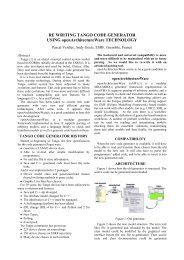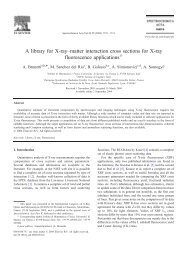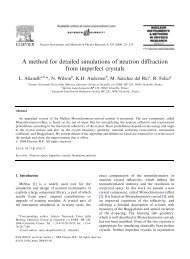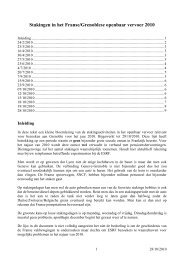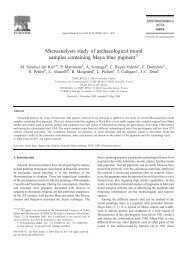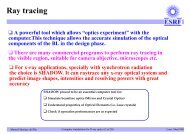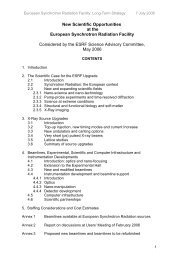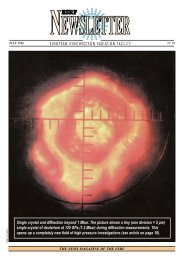Report on future detector requirements at ESRF
Report on future detector requirements at ESRF
Report on future detector requirements at ESRF
You also want an ePaper? Increase the reach of your titles
YUMPU automatically turns print PDFs into web optimized ePapers that Google loves.
Linearity:<br />
For the same reas<strong>on</strong>, linearity <strong>on</strong> an extended range of intensities has to be reached <strong>on</strong> both<br />
main <strong>detector</strong> and incident flux <strong>detector</strong>.<br />
Flux <strong>on</strong> <strong>detector</strong>:<br />
In order to optimise the use of the <strong>detector</strong> characteristics (linearity and signal to noise r<strong>at</strong>io),<br />
the flux is adjusted so th<strong>at</strong> the measured currents range from 0.1 pA and 1 µA. To give an<br />
equivalent in terms of phot<strong>on</strong>s <strong>on</strong> a Si diode, 0.1 pA corresp<strong>on</strong>ds to 3000 phot<strong>on</strong>s of 1 keV.<br />
Particular oper<strong>at</strong>ing c<strong>on</strong>diti<strong>on</strong>s:<br />
The <strong>detector</strong>s will be oper<strong>at</strong>ed in ultra-high vacuum, near high magnetic fields up to 6 T.<br />
Existing <strong>detector</strong>s<br />
ID12 is using Si pnn + photodiodes oper<strong>at</strong>ed in the photovoltaic mode and optimised for the<br />
beamline by Eurisys-Mesures [Goul<strong>on</strong> et al., 2005]. The dark current <strong>on</strong> both I and I0 is<br />
measured altern<strong>at</strong>ively with the fluorescence signal using a chopper <strong>at</strong> a typical frequency of<br />
67 Hz.<br />
Short term possibilities<br />
A p<strong>at</strong>ent (FR08/55566, Goul<strong>on</strong> et al.) has been registered c<strong>on</strong>cerning a <strong>detector</strong> for the<br />
measurement of ferromagnetic res<strong>on</strong>ances <strong>at</strong> GHz frequencies.<br />
Main required improvements<br />
The main expected improvement c<strong>on</strong>cerns the detecti<strong>on</strong> of signals of very low intensity <strong>at</strong><br />
high frequencies.<br />
Other types of <strong>detector</strong>s<br />
Circular Polariz<strong>at</strong>i<strong>on</strong> Beamline also uses an energy dispersive <strong>detector</strong> (see page 94).<br />
22



